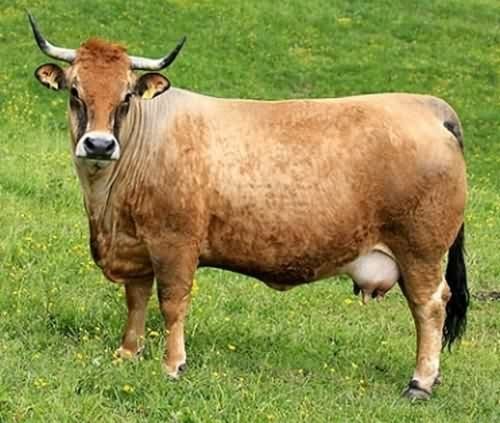Type the name of the breed you're looking for below
[wpdreams_ajaxsearchlite] Don't see the breed your're looking for? Click here and let us know!
Aubrac cattle
| Place of Origin | France |
| Origin | The Aubrac is a very old French beef cattle breed with 150 years of breeding history. After centuries of breeding selection by French monks, it was decided to open a herd book in 1893. It was the golden age of the breed. Cows spent the winter in the farm and gave birth to calves. At the end of spring the cows went to the mountains, where rich grass and flowers give the best milk to make a cheese named Laguiole. At the farm, young bulls were bred to became draft oxen. 300,000 Aubrac existed at this time. At the end of World War II, the popularity of oxen saw a decline, and after the 1950s, milk was more cheaply produced by new breeds like Braunvieh or Holstein cows. With the previous niches now filled by other breeds, the Aubrac became a beef breed. Today, around 3000 cows are inscribed in the French studbook, the whole population in France representing approximately 10,000 cows. In Germany there are 2,500 cows, half of them inscribed in a studbook. |
| Purpose | Because of many years of selection for hardiness, a tough breed was developed with a high level of resistance to disease, frugality, easy calving and longevity. Most of the cows are kept as suckler cows. In France, 60% of the cows are covered by Charolais bulls, because of the ability of the Aubracs to successfully cross with heavy beef breeds. With the financial help of local authorities, small groups of farmers still choose to keep a few Aubracs around for dairy use. |
| Appearance | The color is tan, darker on the nose and eyes, circled with white. The skin is black and the long horns are of lyre type. This breed is medium tall: 130 centimeters (51 in) for cows and 140 centimeters (55 in) for bulls. |
| Horns | Long lyre-type horns |
| Cows Average Weight | 600 kg (1,300 lbs.) |
| Bulls Average Weight | 900 kg (2,000 lbs.) |
| Other Considerations | Lactation averages 2,180 kg at 4.13% fat in 248 days. |



